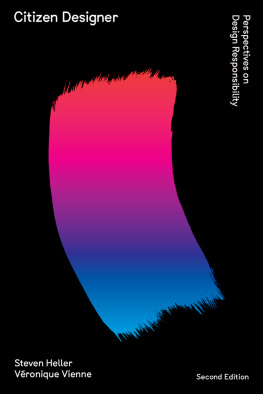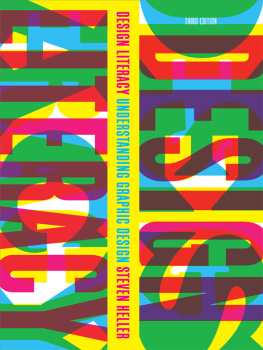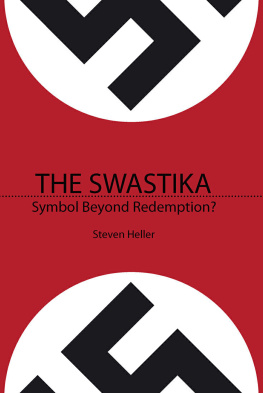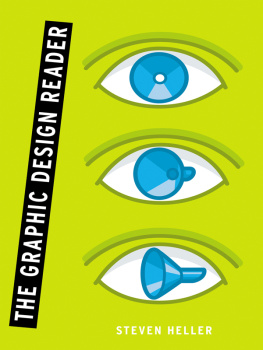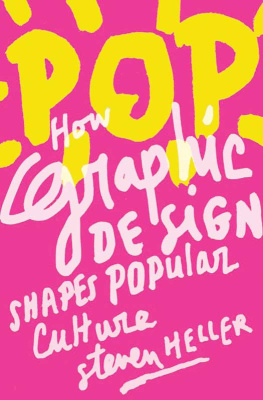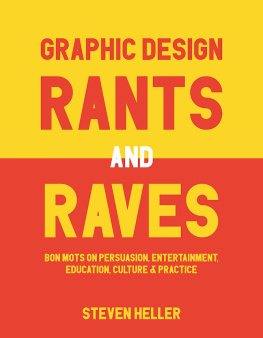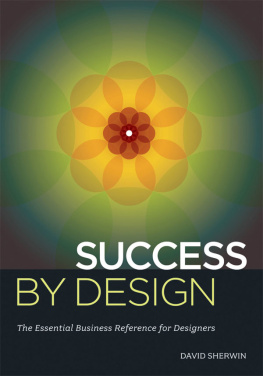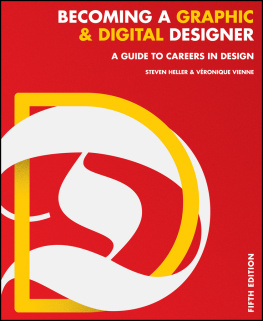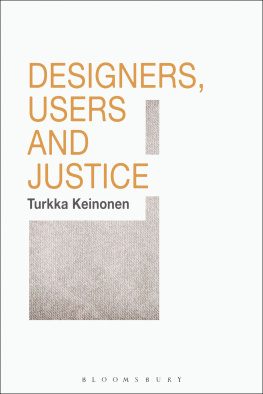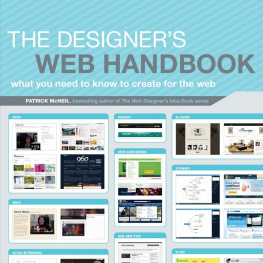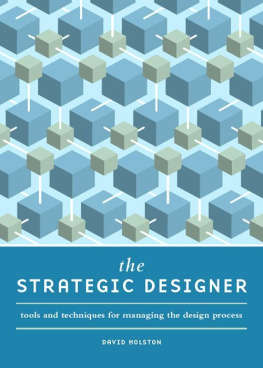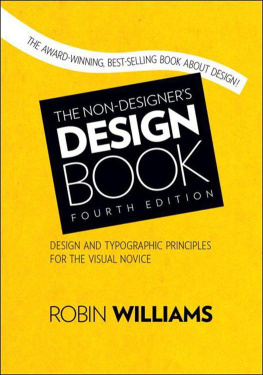

Copyright 2018 by Steven Heller and Vronique Vienne
All rights reserved. Copyright under Berne Copyright Convention, Universal Copyright Convention, and Pan American Copyright Convention. No part of this book may be reproduced, stored in a retrieval system, or transmitted in any form, or by any means, electronic, mechanical, photocopying, recording or otherwise, without the express written consent of the publisher, except in the case of brief excerpts in critical reviews or articles. All inquiries should be addressed to Allworth Press, 307 West 36 Street, 11th Floor, New York, NY 10018.
Allworth Press books may be purchased in bulk at special discounts for sales promotion, corporate gifts, fund-raising, or educational purposes. Special editions can also be created to specifications. For details, contact the Special Sales Department, Allworth Press, 307 West 36 Street, 11th Floor, NY, New York 10018 or .
22 21 20 19 18 5 4 3 2 1
Published by Allworth Press, an imprint of Skyhorse Publishing, Inc., 307 West 36 Street, 11th Floor, NY, New York 10018. Allworth Press is a registered trademark of Skyhorse Publishing, Inc., a Delaware corporation.
www.allworth.com
Design: Area-of-Practice.com
Kevin Brainard and Cybele Grandjean
Library of Congress Cataloging-in-Publication Data
Names: Heller, Steven, editor. | Vienne, Vronique, editor. Title: Citizen designer perspectives on design responsibility / edited by Steven Heller and Veronique Vienne.
Description: Second edition. | New York : Allworth Press, 2018. | Includes bibliographical references and index.
Identifiers: LCCN 2017049004 (print) | LCCN 2017049812 (ebook) | ISBN 9781621536444 (e-book) | ISBN 9781621536406 (pbk. : alk. paper)
Subjects: LCSH: DesignPhilosophy. | DesignSocial aspects. | DesignersInterviews.
Classification: LCC NK1505 (ebook) | LCC NK1505 .C54 2018 (print) | DDC 745.4dc23
LC record available at https://lccn.loc.gov/2017049004
Print ISBN: 978-1-62153-640-6
Ebook ISBN: 978-1-62153-644-4
Printed in the United States of America
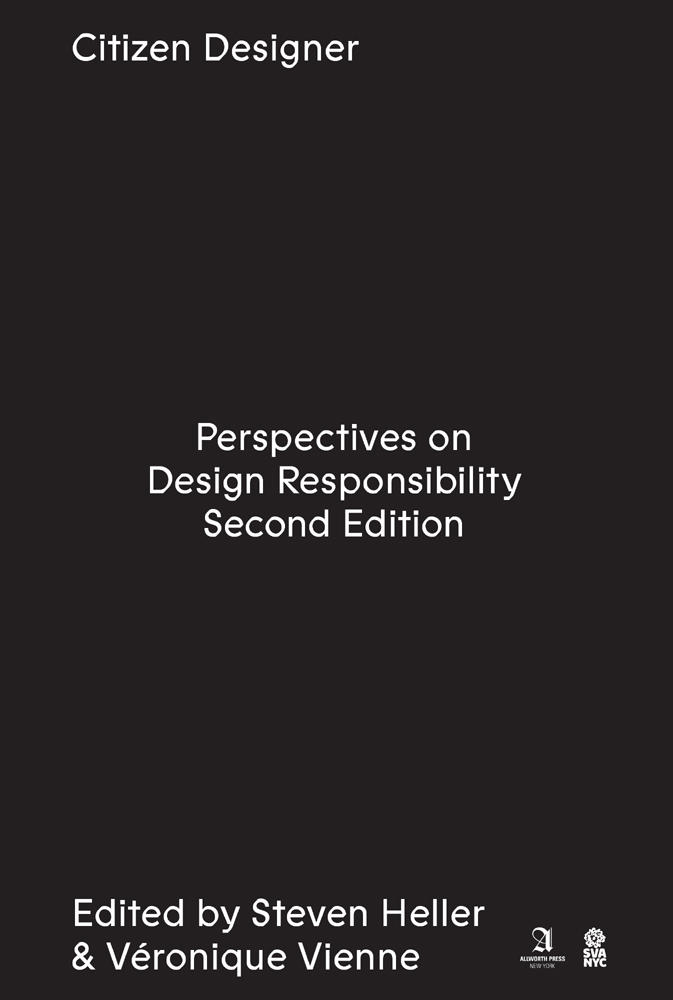
Dedicated to Barack and Michelle Obama
Contents
Conversation with Steven Heller and Vronique Vienne
Steven Heller
Vronique Vienne
Bob McKinnon
Mark Randall
Cheryl Heller
Vronique Vienne
Cheryl Heller
Jessica Helfand
Steven Heller Interviews Mike Davis
Dr. Miriam M. Ahmed
Vronique Vienne interviews Laetitia Wolff
Edited by Laetitia Wolff
Kofi Opoku
Vronique Vienne Interviews Sbastien Marchal
Vronique Vienne Interviews Carol Overby
Vronique Vienne Interviews Vincent Perrottet
Thomas Bohm
Steven Heller
Adam Harrison Levy Interviews Henry Singer
Irene Pereyra
Karisa Senavitis
Steven Heller
Katherine McCoy
Ken Garland
Stuart Ewen
Thomas Frank
Chris Riley
Leslie Becker
Mr. Keedy
Robbie Conal
J. D. Biersdorfer
Vronique Vienne Interviews Fabrizio Gilardino
Michael Schmidt
Cheryl Towler Weese Interviews Stanley Tigerman
Victor Margolin
Steven Heller Interviews Milton Glaser
Acknowledgments
Thanks to all our contributors. Not just for generously sharing their work for the second edition but for making a difference as citizens and designers.
Tons of gratitude to Tad Crawford, publisher of Allworth Press, who has been a consistently enthusiastic supporter of design publishing and social concerns. The field of design writing would be considerably less engaging if not for his support.
Our editor on this project was Chamois Holschuh; thanks for guiding us through the ups and downs of the process.
Thanks also to Kevin Brainard and Cybele Grandjean for their attention to the details of typography and all things design.
Finally, thanks to David Rhodes, president of the School of Visual Arts (SVA NYC), who has been a stalwart supporter for these books with Allworth. And also to Anthony Rhodes, executive vice president of SVA, and Lita Talarico, cochair of the SVA Design: Designer as Author + Entrepreneur program, for their enthusiasm.
Steven Heller & Vronique Vienne
Introduction to Second Edition
Steven Heller & Vronique Vienne
SH We coined the term and published the book Citizen Designer: Perspectives on Design Responsibility in 2003. It seems like yesterday, but a lot has happened in the world since that time. Designers, I can safely argue, have become more engaged as citizens and more conscious of the roles they play in culture, politics, and society, both serving and creating. I think well discuss how this is playing out in terms of overall impact as we continue this introductory conversation. But as a way of introducing the introduction, how do you feel the worlds of design and human existence have changed since the first volume?
VV So much has happened since 2003, my head is spinning: wars, elections, environmental disasters, social upheavals, technical revolutions, scandals, and so on.
Its daunting to think about it all. You and I arent going to dwell on the pastour challenge is to focus on whats happening nowyet, looking back offers occasional lessons. One such lesson for me was the 2003 media performance of US Secretary of State Colin Powell addressing the UN Security Council. His job was to convince the American public that Iraq had weapons of mass destruction. It was probably not the first time in history an administration shamelessly and publicly resorted to fake news to justify its policy, but we were naive. We could tell it was a bunch of liesfabricated evidence? deception by omission? pure fiction?however we didnt have the words to describe what we were witnessing. So we just sat there, in front of our television, dumbfounded and powerless.
This is what I hope this book can do: give our readers the verbal tools they will need to articulate their thoughts and express their doubts and objections whenever necessary. One needs the right vocabulary in order to be able to make a difference as a citizen, as a communication designer, as a visual journalist, or as media developer. Do you agree with me that designers can no longer afford to remain silent?
SH No doubt about it. Designers have a responsibility to help instigate, investigate, and ingratiate. By this I mean designers made action happen but only after doing their homework, because with facts presented in accessible, enticing, and believable ways, we can help people understand and make change.
I worry that Im using buzzwords. But even buzzwords and buzz images and buzz typographic treatments have meaning. Being a citizen designer means being ready to marshal out skills, talents, and know-how to energize others.
But what Ive just said is generalizing too much. The new glossary that leads off this new edition is designed to provide the vocabulary that you are talking about. Words have consequences, and Im all for making those consequences be significant. But it leads me to ask the question that our readers are bound to ask. Why, since a major part of our language is visual, have we decided quite deliberately not to use any visuals or, for that matter, show any actual design in our second edition?
VV Nowadays, readers who are interested in a particular topic will search online to find corresponding images and additional information. We are careful to provide the proper references to facilitate the search process. Considering that images are available just clicks away, we agreed that we didnt need to reproduce them, thus saving paper pulping, bleaching and sizing, water, pigments, and ink.
Next page
